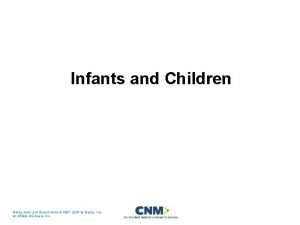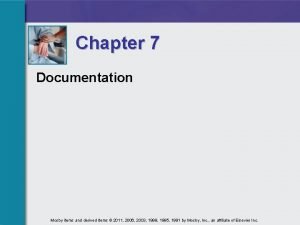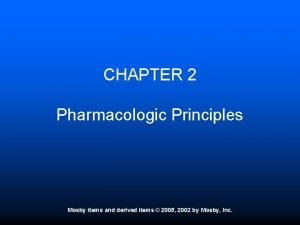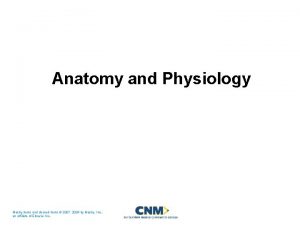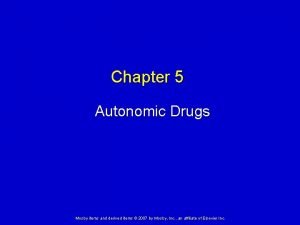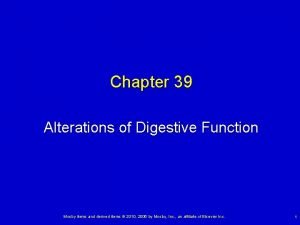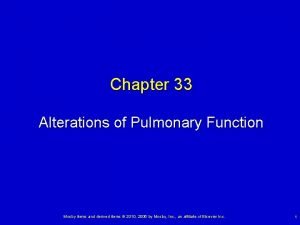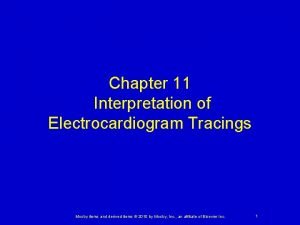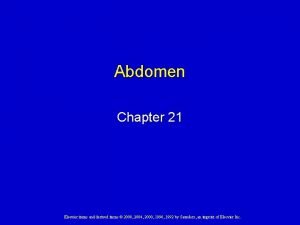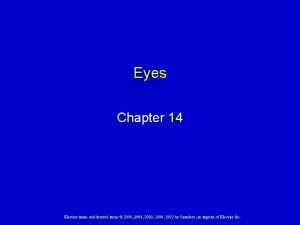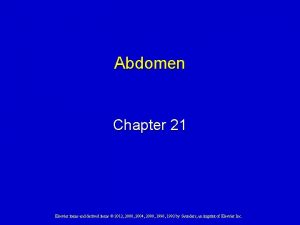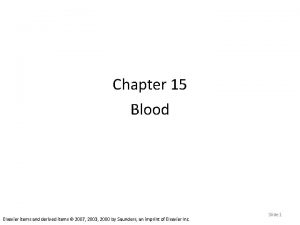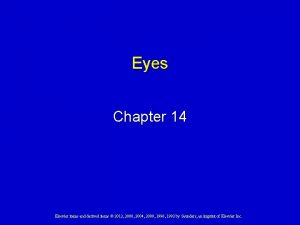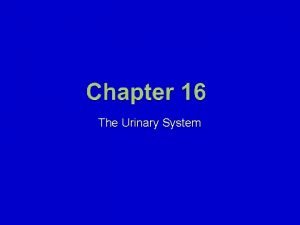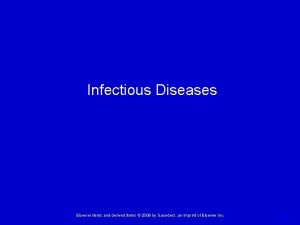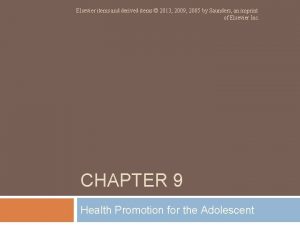Chapter 24 Urinary System Elsevier items and derived













- Slides: 13

Chapter 24 Urinary System Elsevier items and derived items © 2007, 2003, 2000 by Saunders, an imprint of Elsevier Inc. Slide 1

Introduction • The urinary system consists of organs that make urine, temporarily store it and then eliminate it from the body. The kidneys contain the nephron units that make urine, thereby eliminating waste from the body and regulating water and electrolyte balance. Slide 2

Excretion • There are several organs of excretion: kidney, skin, lungs, intestines. • The urinary system organs include the kidneys, ureters, urinary bladder, and urethra. Slide 3

Kidneys • The kidney has three distinct regions: cortex, medulla, pelvis. • The kidneys have many functions: excrete nitrogenous waste; regulate blood volume, regulate electrolyte concentration, regulate p. H and blood pressure, and stimulate red blood cell production. Slide 4

Urine Making: Nephron Unit • The nephron unit is the functional (urine-making) unit of the kidney. • The nephron unit is composed of tubular structures and vascular structures. Slide 5

Urine Making: Nephron Unit cont’d • There are three processes in urine formation. – Glomerular filtration filters 180 L of filtrate in 24 hours. – Tubular reabsorption causes the reabsorption of 178. 5 L of filtrate. • A substance is either completely or incompletely reabsorbed. • A substance is either reabsorbed actively or passively. – Tubular secretion causes the secretion of small amounts of specific substances from the peritubular capillaries into the tubules. Slide 6

Hormones That Work on the Kidneys • Aldosterone – Aldosterone stimulates the distal tubule to reabsorb Na+ and water and to excrete K+. – The secretion of aldosterone is regulated by the renin-angiotensin-aldosterone system. Slide 7

Hormones That Work on the Kidneys - cont’d • Antidiuretic Hormone (ADH) – ADH stimulates the collecting duct to reabsorb water. – ADH is released from the posterior pituitary gland in response to low blood volume and increased concentration of solute in the plasma. Slide 8

Hormones That Work on the Kidneys - cont’d • Natriuretic peptides (ANP, BNP) inhibit the reabsorption of Na+ and water, thereby causing natriuresis and the excretion of water. • Parathyroid hormone (PTH) stimulates the renal reabsorption of calcium and the excretion of phosphate. Slide 9

Composition of Urine • • • Amount p. H Specific gravity Color Abnormal constituents (The characteristics of urine are summarized in Table 24 -3. ) Slide 10

When the Kidneys Don’t Work • The parts of the kidney can be damaged or diseased. • Kidney failure causes a syndrome called uremia. • Dialysis can prevent uremia. Slide 11

Your Plumbing • Ureters: The two ureters are long, slender tubes that carry urine from the renal pelvis to the bladder. • Urinary Bladder – The urinary bladder is a temporary reservoir that holds the urine. – The detrusor muscle is a smooth muscle responsible for bladder contraction and the elimination of urine. Slide 12

Your Plumbing - cont’d • Urinary Bladder—cont’d – There are two sphincters: internal (involuntary) and external (voluntary). – The voluntary elimination of urine is called urination (micturition). • The urethra is a tube that carries urine from the bladder to the outside of the body. Slide 13
 Mosby items and derived items
Mosby items and derived items Mosby items and derived items
Mosby items and derived items Mosby items and derived items
Mosby items and derived items Lliver
Lliver Caudal region of the body
Caudal region of the body Mosby items and derived items
Mosby items and derived items Mosby items and derived items
Mosby items and derived items Mosby items and derived items
Mosby items and derived items Mosby items and derived items
Mosby items and derived items Mosby items and derived items
Mosby items and derived items Mosby items and derived items
Mosby items and derived items Mosby items and derived items
Mosby items and derived items Mosby items and derived items
Mosby items and derived items Mosby items and derived items
Mosby items and derived items

